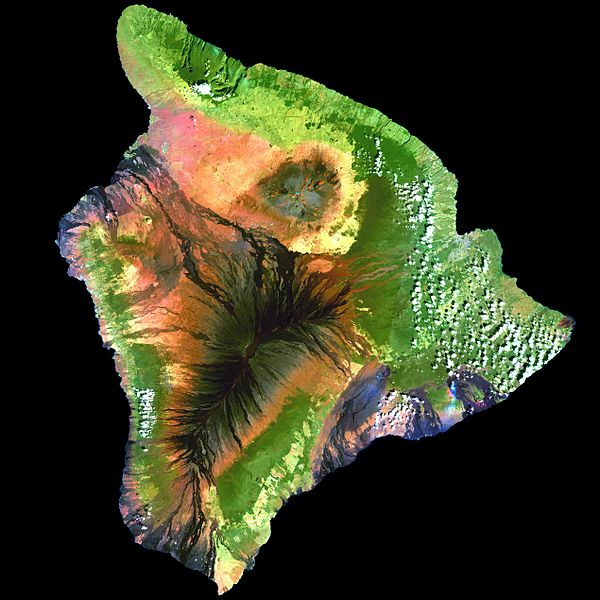Акс:Island of Hawai'i - Landsat mosaic.jpg

Андозаи ин пешнамоиш: 600 × 600 пиксел. Дигар кайфиятҳо: 240 × 240 пиксел | 480 × 480 пиксел | 768 × 768 пиксел | 1 024 × 1 024 пиксел | 2 048 × 2 048 пиксел | 5 076 × 5 076 пиксел.
Акси аслӣ ((5 076 × 5 076 пиксел, ҳаҷми парванда: 5,19 Мбайт, навъи MIME: image/jpeg))
Таърихи файл
Рӯи таърихҳо клик кунед то нусхаи марбути парвандаро бубинед.
| Таърих | Бандангуштӣ | Андоза | Корбар | Тавзеҳ | |
|---|---|---|---|---|---|
| нусхаи феълӣ | 11:59, 1 сентябри 2009 |  | 5 076 × 5 076 (5,19 Мбайт) | Túrelio | saved with 95% quality (low compression), but without "progressive" option |
| 11:59, 1 сентябри 2009 |  | 5 076 × 5 076 (4,9 Мбайт) | Bidgee | Fix thumbnail generation issue caused by progressive loading. | |
| 11:31, 1 сентябри 2009 |  | 5 076 × 5 076 (4,91 Мбайт) | Rocket000 | reuploading | |
| 11:52, 27 Декабри 2007 |  | 5 076 × 5 076 (4,91 Мбайт) | Avenue | {{Information| |Description=This simulated true-color image of the island of Hawai'i was derived from data gathered by the Enhanced Thematic Mapper plus (ETM+) on the Landsat 7 satellite between 1999 and 2001. |Source=[http://veimages.gsfc.nasa.gov/2712/l |
Пайвандҳо
Саҳифаҳои зерин ба ин акс пайванданд:
Истифодаи саросарии парванда
Викиҳои дигари зерин ин файлро истифода мекунанд:
- Истифода дар af.wikipedia.org
- Истифода дар ar.wikipedia.org
- Истифода дар ast.wikipedia.org
- Истифода дар az.wikipedia.org
- Истифода дар be.wikipedia.org
- Истифода дар bn.wikipedia.org
- Истифода дар br.wikipedia.org
- Истифода дар ca.wikipedia.org
- Истифода дар ceb.wikipedia.org
- Истифода дар cy.wikipedia.org
- Истифода дар de.wikipedia.org
- Истифода дар de.wikivoyage.org
- Истифода дар en.wikipedia.org
- Hawaii (island)
- Mauna Loa
- Landsat program
- Geoinformatics
- Puna, Hawaii
- User:Spikebrennan
- Portal:Hawaii/Selected article
- Portal:Hawaii/Selected article/11
- Wikipedia:Featured picture candidates/February-2008
- Wikipedia:Featured picture candidates/Big Island of Hawai'i
- User:Hawaiian Mafia
- User:Aoi/sandbox
- Истифода дар es.wikipedia.org
- Истифода дар es.wikibooks.org
- Истифода дар eu.wikipedia.org
- Истифода дар fa.wikipedia.org
- Истифода дар fr.wikipedia.org
- Истифода дар fr.wikivoyage.org
- Истифода дар ga.wikipedia.org
- Истифода дар haw.wikipedia.org
- Истифода дар he.wikipedia.org
- Истифода дар hi.wikipedia.org
- Истифода дар hu.wikipedia.org
- Истифода дар ia.wikipedia.org
- Истифода дар id.wikipedia.org
- Истифода дар incubator.wikimedia.org
- Истифода дар is.wikipedia.org
- Истифода дар ja.wikipedia.org
View more global usage of this file.
